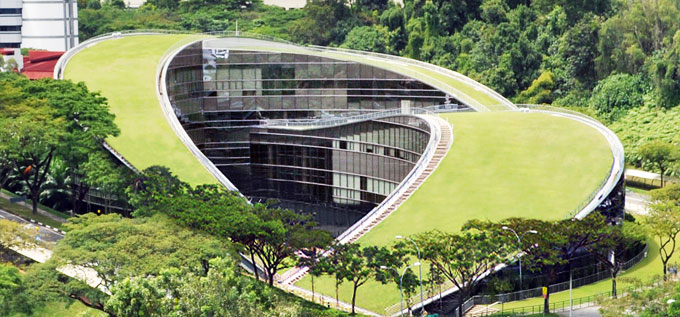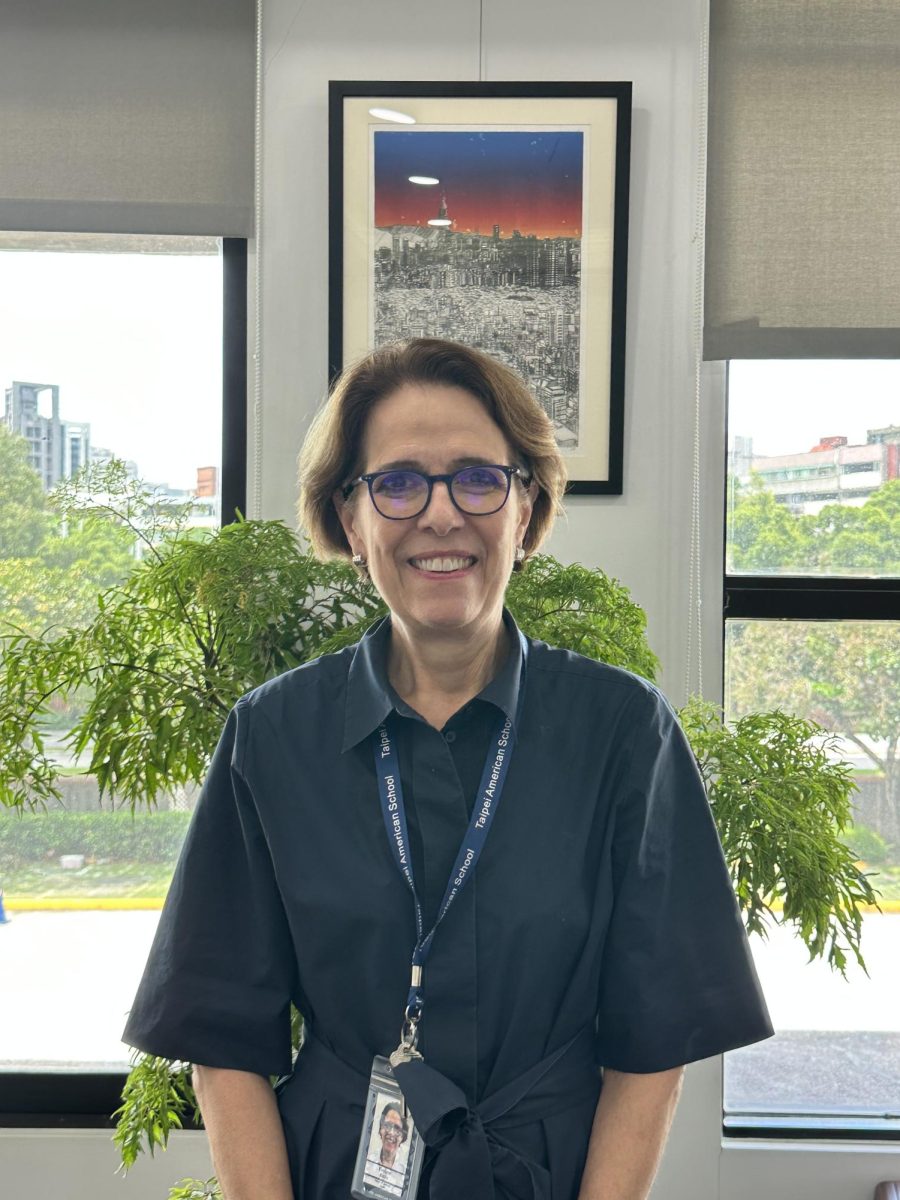Last year, TAS was the first international school in East Asia to become a member of the Green Schools Alliance. In an effort to preserve resources and reduce costs, the TAS School Board provided sufficient funds to attain the Bronze level of EEWH (Ecology, Energy savings, Waste reduction, and Health) in Taiwan. Several sustainability improvements included replacing building control systems systems, using LED lighting, improving the temperature sensor systems, and making sure purchases by the school are environmentally friendly. A wind turbine and PV solar cells on the D Block roof are also now hooked into the TAS electrical grid.
Several high schools around the world have taken rebuilding the school to have a connection with the natural world a few steps further. Nanyang Technological University in Singapore has a sloping, curving “green roof” that covers its entire building. This roof insulates the building, harvests rainwater, serves as student meeting spots, and on hot days, even cools the air. The University also encourages natural views and glass walls that allow light to stream through, making the school into its own little greenhouse. There is even a reflecting pond on campus that helps cool the center space.
Ørestad High School in Denmark has also redefined what a 21st century school looks like. The school is designed for greater connection to the outside world to increase creativity and concentration. Classrooms no longer exist. Instead, the building is divided into four “study zones” that are each on their own floor, linked by a wide spiral staircase that leads to a roof terrace. Students sit on beanbags and can even study outside at the school’s waterfront. Learning at this school is self-organized and without fixed timetables, so students can have full transparency of the curriculum and completely embrace it.
Like many business spaces, a common trend of schools of the 21st century is encouraging open design and transparency in all aspects of student lives. When students start to nod off in class, most teachers will open a window. By 2026, perhaps TAS can open up the entire classroom. While our school may not be quite at the point of complete redesign, it will hopefully continue to expand on the green initiative. Perhaps in the future there will even be investment in glass shades that rotate with the sun, outdoor classrooms with seating, or even growing sustainable food in a school-wide gardening initiative that could be cooked in the cafeteria.
It is now more important than ever or students to both see the connection and affect they have on the natural world and to discuss the problems associated with it. “The purpose [of implementing green energy] was more educational than replacing a lot of conventional sources of energy,” said Mr. Anderson, Upper School Science teacher. “But I do know they’re sensitive to the issue and I think if students or faculty have good ideas, they’re all ears.


![Members of Flourishing Love arrange bouquets together. [PHOTO COURTESY OF FLOURISHING LOVE]](https://blueandgoldonline.org/wp-content/uploads/2023/12/fl-1200x900.jpeg)
![Members of Formosa Charity reconstruct an old home. [PHOTO COURTESY OF CHAEWON B. (25)]](https://blueandgoldonline.org/wp-content/uploads/2023/12/bwb.jpeg)


![Catrina was waitlisted at Caltech but
intends to pursue Computer Engineering
at the University of Washington. [PHOTOS
COURTESY OF CATRINA Y.]](https://blueandgoldonline.org/wp-content/uploads/2023/05/Copy-of-IMG_4544-900x602.jpg)
![Honors Film 3 and 4 students set up the camera and microphone to get ready for an interview. [PHOTO COURTESY OF TAS FILM]](https://blueandgoldonline.org/wp-content/uploads/2023/05/DSC09834-900x507.jpg)